Showing 37–48 of 247 results
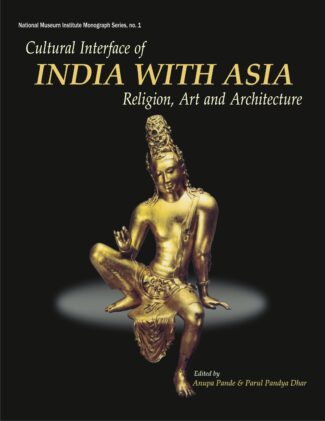
This collection of scholarly papers focuses on the centrality of the Indian contribution in defining the Asian cultural matrix and brings under one rubric the views of Indian as well as Eurasian experts on the subject.
The reality of the Indian presence in Asian cultures is undeniable. Recent scholarship in the field of Asian cultural studies has laid much stress on the essential oneness of the substratum that defines what may be termed as an Asian identity. Buddhism and Hinduism, having originated in India, travelled beyond the frontiers of the land of their origin, and in many ways, moulded the beliefs and faith of the people of Asia. Trade, political ambitions, and religious pursuits led to a dissemination of Indian ideas and forms across Asia. In each area of Indian influence, the assimilation of Indian traditions with indigenous practices led to the development of a new idiom of expression with a distinctive localized identity. This collection of scholarly papers focuses on the centrality of the Indian contribution to Asian cultures and brings under one rubric, the views of experts from India, Nepal, Tibet, Sri Lanka, Afghanistan, Cambodia, Thailand, Indonesia, Mongolia, China, Korea, Japan, Belgium, Bulgaria, and the United Kingdom. Such an international representation, the consequence of a Seminar held in the National Museum Institute in collaboration with the Indian Council for Cultural Relations, New Delhi, is unique not only in providing the Indian point of view but also in revealing Eurasian perspectives on the subject of Indias pivotal role in defining the Asian cultural matrix.
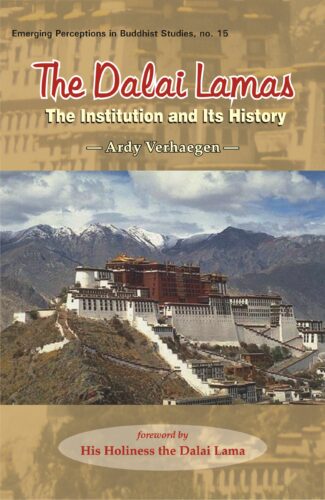
Richly annotated, this work is a deep study of the institution of the Dalai Lama: its rise to prominence, its working and its role within the socio-political structures of Tibet and Asia. All this is set against a historical narrative that brings out the unique religious culture and spiritual legacy of the land.
From the fifteenth century on, the Dalai Lamas emerged as the pre-eminent spiritual and secular leaders of Tibet. In his foreword to this book Tenzin Gyatso the Fourteenth Dalai Lama states that Buddhism, with its powerful central message of compassion . . . transformed Tibetans from the powerful warlike nation that dominated Central Asia in the seventh century to the more peaceful and religious people they are today. With Chinas continued occupation of Tibet threatening the very existence of a distinct Tibetan identity and culture the Dalai Lama feels it his primary responsibility to take whatever steps I must to save my people and their unique heritage from total annihilation. Author Ardy Verhaegen not only succinctly tells the story of each of the Dalai Lamas and their contribution as human beings to Tibets destiny, as the Dalai Lama points out, but also the historical narrative within which these eminent personalities played out their lives. Starting with the spread of Buddhism and its introduction into Tibet, Verhaegen chronicles the development of that countrys unique religious culture, the rise to prominence of the Dalai Lamas, and the role of the Dalai Lama institution within the social-political structures of Tibet and Asia. Descriptions of the workings of the institution itself and the current struggles of Tibetan culture to survive outside its historical borders round out this volume. Richly annotated, this introduction to the institution of the Dalai Lama is of value to both serious students of Tibetan history and culture and all those interested in one of the more fascinating stories of our times. The perilous flight of the Dalai Lama into exile and the subsequent success of the Tibetan diaspora community against tremendous odds are having profound implications for humanity at large. Ironically, while imperiled within Tibet itself, the spiritual legacy of the land of snows has spread through its incarnate lamas and teachers such that the principles of peace, compassion and individual enlightenment inherent in Tibetan Buddhist culture and embodied in the Dalai Lama now enjoy favour worldwide. The awarding of the 1989 Nobel Peace Prize to the Dalai Lama is indicative of this esteem, not only towards His Holiness but also the institution he represents.
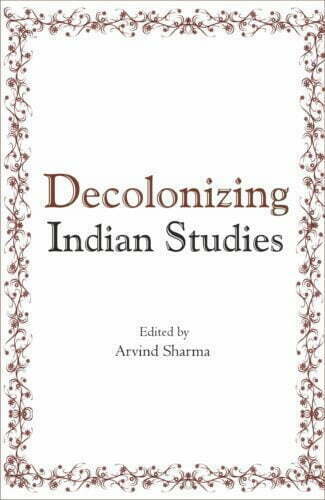
Indian academic self-understanding of the day is highly influenced and mediated by the Western culture and its understanding of Indian civilization. The political agenda of the colonizer has overshadowed the legitimacy of Indias history and culture. This development poses numerous doubts about its authenticity and credibility. This volume addresses this and many a related issue.
The present Indian academic self-understanding of its history and culture is largely Western in origin. This Western intellectual enterprise, however, went hand in hand with a Western political enterprise, i.e. the colonization of India. This raises the question: To what extent, if any, did the two developments influence each other? It also raises another question: To what extent did Wests cultural presuppositions influence its understanding of Indian civilization?
The central epistemological issue which these questions raise is the following: What significance does the fact that the self-understanding of a culture is mediated by that of another culture, over which it was culturally and politically dominant, possess for the votaries of the culture whose self-understanding has thus been mediated in this fashion?
This question is not merely of historical but also of contemporary interest, for in an increasingly globalizing world, in which power is unevenly distributed at various levels, the self-understanding of all cultures is likely to be influenced by how they are being presented by other cultures. Furthermore, in such a world, shifting political alliances may generate new intellectual configurations, whose legitimacy may require constant examination. The essays in this book address these and similar issues.
Jain, Bauddha and Ajivaka belong to Sramanic tradition. Ajivakas were firm believers of determinism (Niyativada). Determinism, in philosophy, implies that all events, including moral choices, are completely determined by previously existing causes. But when we talk about niyati as per Jain perspectives, there is a doctrine of karma. According to karma theory, an individual’s present condition is determined not by any absolute principle but by his own actions performed either in his past lives or in this life. By freely choosing the right course and following it faithfully, he could improve his destiny and ultimately win salvation.
But Jainism does not totally reject the doctrine of Niyativada. It talks of five co-factors (panca-samavaya), i.e. kala, svabhava, niyati, purvakrta and purusa. The first cause of the universe is false when each of the five factors is taken singly but true when they are considered jointly. Buddhist text Digha Nikaya talks of two types: (1) Theistic determinism (2) Karmic determinism. However, Buddha does not teach that we have complete freedom or that we are determined, but that our will is conditioned or limited to a greater or lesser extent.
This volume contains ten selected papers that present the philosophical discussion on determinism in Srmananic traditions, particularly in Jainism.
Deviant Sex and Buddhism discusses deviant sexual practices recorded in Pali Sutta and Vinaya texts categorizing into normal, pathological and sociological. In Buddhist spirituality and philosophy, like in other religions, sex within the institution of marriage is admissible, while all other forms of sexual practices are immoral and denounced. A sexual act violating the norms of chastity and celibacy within the Buddhist community comes to be identified as a deviant sexual act.
At the backdrop this positioning, this volume engages one in a deep study of what were sensuality and sexuality in early Buddhism, Buddhist attitude to human body, and the definition of celibacy, chastity and normal deviant sexual behaviour along with the nuances of the other two forms of deviant sexual behaviour, i.e. pathological and sociological. Going by the Buddhist philosophy, any deviant sexual behaviour is connected with the issue of human suffering. Twofold sexual conformity – complete sexual abstinence and sex only with one’s own spouse – is emphasized while decrying all non-conforming sexual practices and deciding on a range for sexual acts including homosexual relationship.
This scholarly work should invigorate the interests of many researchers and academicians to take up further studies and researches on the topic, which has not yet been exposed to the literary world at length.
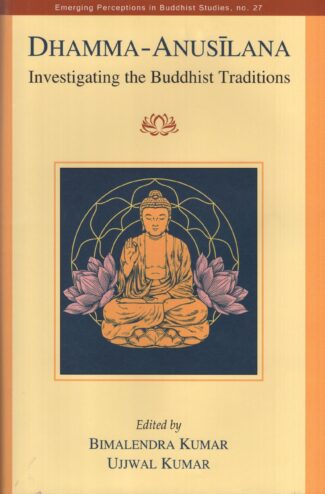
This book is an anthology of seventeen cerebral articles from well-known Buddhist scholars associated with major universities across the globe deliberating many a topic associated with Buddhist religion and its philosophies as part of our constant striving to understand the fundamental nature of what the Buddha wanted us to realize.
There have been serious attempts to understand the Buddha and his teachings since the inception of Buddhism some 2,600 years ago. All through the history of Buddhism, scholars were constantly striving to understand the fundamental nature of what the Buddha wanted us to realize. This book is an anthology of seventeen cerebral articles from well-known Buddhist scholars associated with major universities across the globe. In four parts – Meditation; Personality and Position; Dharmakirti and Persons; and Principles, History and Grammar – it highlights some pertinent topics associated with Buddhism and its legacy.
Part I discusses the diverse dimensions of meditation, dedicating itself to the kiriya (action) aspects of Buddhism. Part II is an attempt to delineate and study the major branches of Buddhism. Part III deliberates on the contributions of Dharmakirti and Rahula Sankrtyayana to the Buddhist philosophy along with the concept manusa-panatipata and how the revelation of reality of human experience by analysis helps a person to achieve wisdom in the light of Majjhima Nikaya Anathapindikovadasutta. Part IV has papers on different philosophical and applied concepts of Buddhism.
This volume thus should benefit one in understanding many an aspect of Buddhism vis-à-vis its enormous corpus of literature and teachings. It should highly benefit the students of Buddhism and for those who are keen to fathom deep into the myriad topics of Buddhist philosophy and teachings.
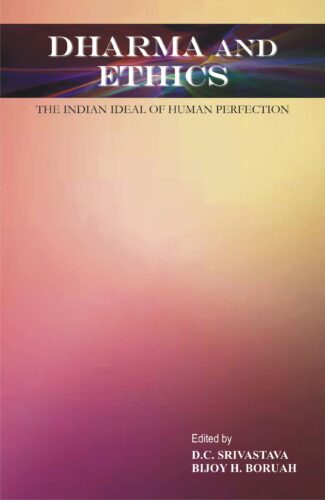
The volume consists of fourteen essays written by scholars of diverse disciplinary discourses, such as Philosophy, Political Science, Literature, Economics and Classical Studies (Sanskrit) and presented to the serious reader as an Indian picture of the virtuous life set against the larger background of virtues that are woven into the fabric of Western civilization.
Set against the background of the contemporary popularity of virtue ethics in the West, this book projects a unified picture of Indian Virtue Ethics by highlighting two interrelated purposes. First, it canvasses the point that Indian ethics, both in its classical and its modern shapes, is basically founded upon the cultivation of those attitudes that conduce to the realization of a virtuous self. Second, it draws out the various facets of virtues, traditional and modern, which bear a specifically Indian character. With these two aspects combined into a complex whole, this work manages to present itself as a coherent set of ethical ideas with a distinctively Indian identity.
The book consists of fourteen essays written by scholars belonging to diverse disciplinary discourses: Philosophy, Political Science, Literature, Economics and Classical studies (Sanskrit). As such, it presents to the serious reader a multi-perspectival Indian image of what it is like to lead a virtuous life and to aspire for human perfection.
Central to the Indian ideal of human perfection in the Indian tradition is the place of dharma in the overall scheme of life. While this centrality of dharma is recognized in the essays included in this book, the virtue-ethical interpretation of this central concept attempted in these essays is marked by a broader understanding of the concept adapted to the imaginative elucidation of the idea of a dharmic or virtuous life.
It is strongly believed that this book will be an eye-opener to scholars in Philosophy, Religion and Cultural Studies. It promises to set a new standard of ethico-philosophical scholarship by expanding the horizon of virtue ethics as it appears in present Western moral philosophy.
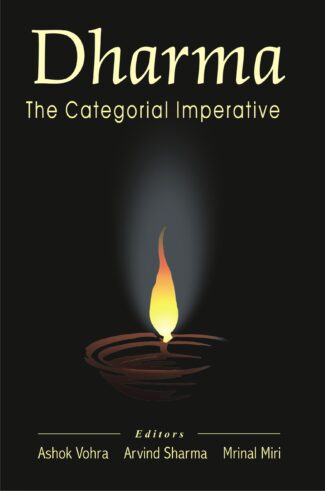
This book presents an in-depth study of the concept of dharma and acknowledges that Indian reality encompasses the elements of religion and dharma. It explores an alternative understanding of Indian civilization, independent of Western presuppositions as well as some contemporary issues relating to women and the dilemmas faced by the Indian diaspora.
Each stable culture and major civilization of the world consists of a distinct material base and a distinct ideational structure and has an inherent mechanism of striking its own equilibrium between the two. In the Indian tradition dharma is the balancing force. Religion and ideology are literally treated as synonymous with the Sanskrit word dharma. But dharma differs from religion in not being exclusive, and from ideology in possessing a transcendental dimension. The papers in this volume acknowledge that neither the word religion nor dharma can be discarded while looking at the Indian reality. They address themselves to the question: To what extent does the continued use of the concept of religion in the Indian context reflect reality, and to what extent does it distort or misrepresent its dhàrmic reality? Given India’s historical and the present existential situation these papers explore the question: Is an alterative understanding of Indian civilization possible, independent of Western presuppositions? The articles in the book present an in-depth study of the concept of dharma and its relation to the other purusharthas artha, kama and moksha, as well as with society, science, religion, Ayurveda and secularism. Relying mainly on the Vedas, epics, Manusmriti and the writings of Plato, Vivekananda, Gandhi et al., these papers explore some contemporary issues relating to women (stri-dharma) and the dilemmas faced by the Indian diaspora, especially in the UK and the US. These discussions have an appeal for a general reader as well as for scholars of Philosophy, Religion, Women’s Studies, Modern India and Sociology.
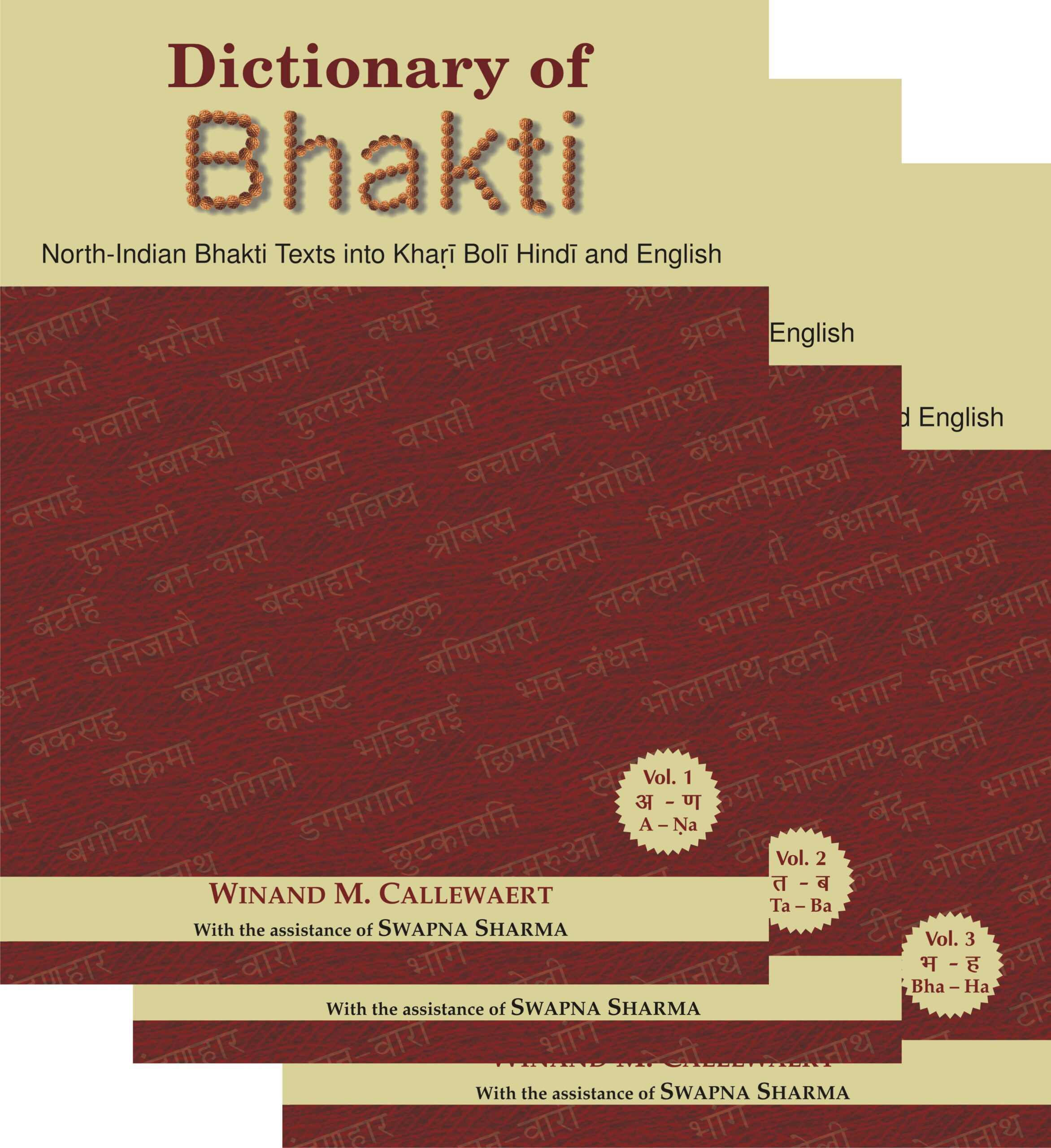
Bhakti is the tool prescribed in the present Kali age to reach the Supreme. Over the last seven centuries mystic reformers preached a monotheistic religion, without caste distinction and wandering singers spread their message in the vernacular languages. This dictionary will enable a wider readership to access and understand the beautiful texts available in bhakti literature.
After ce 1000 an important change took place on the religious scene in India. With the arrival of the Muslims and the establishment of Muslim governments in Delhi and elsewhere, Hinduism was confronted with a powerful religious tradition that was not only supported by military strength but was also endowed with a strong tradition of mysticism. Along with this double challenge, India was invaded by a language, Persian, that became the official language of the imperial court. From ce 1300 onwards a remarkable phenomenon changed the religious history of India. Popular mystic reformers appeared, reacting vehemently against both the Brahmanical ritualism and the corruption in Islamic practices. They preached a monotheistic religion, without caste distinction, stressing very personal devotion and giving their message in the vernacular languages, not in Sanskrit.
The language of this bhakti literature is a mixed medium that, until now, has not been described in detailed grammars and dictionaries, as was the case with Sanskrit. The vocabulary of this medium was borrowed, not only from Sanskrit and Persian but also from local idioms and dialects, and wandering singers adopted many terms and expressions as they travelled from one region to another. Consequently, each fresh edition in this field requires new grammars and glossaries.
The challenge of research in this area is the fact that this literature is only accessible in manuscripts and little has been critically edited. Secondly, the language in which these hymns were sung has been studied only imperfectly, although a lot of progress has been made in the last twenty years. It is important that a wider readership should be able to access and understand the texts available, and it is here that we should situate the usefulness of the Bhakti HindiEnglish Dictionary.
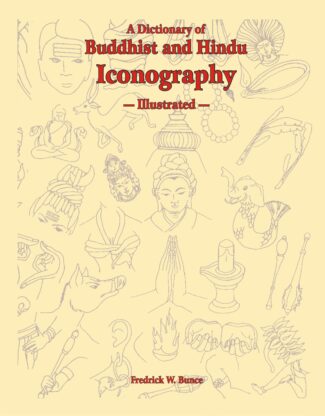
This Dictionary attempts to reveal the divine paradoxes of Buddhist-Hindu iconography by even interpreting the nuances of their iconic language. It explains, vividly, thousands of iconic representations (visual, conceptual symbols, images, objects, concepts, rites).
Man has, from times immemorial, exhibited a striking predilection for symbols. Which, through written words, drawings, sculptures or other visual/iconographic representations, seem to have shaped much of mankinds culture. From the simplest, yet eloquent, drawings on the walls of the prehistoric caves, through the sophistication of Egyptian imagery, the sculptural embroidered wealth of a Khajuraho, or the convoluted elegance of a Mannerist painting all interweave iconographic imagery so inextricably into their very core that, without its visual/didactic richness, these would be a mere shell, a hollow vanity! Veritably, our cultural scenograph will lose much of its aesthetic charm and meaning, once it is bereft of iconography. Over the centuries, Buddhisn and Hinduism (Brahmanical) have built up pantheon after pantheon, with a bewildering number of divinities, in varying forms and emanations and, significantly, with myriad iconographic attributes. Which, for both their definable precision and complex multi-interpretationality, not merely seem paradoxical, but may baffle even the specialists and the initiated as well. Here is just the Dictionary trying, for the first time, to help you see into the divine paradoxesof Buddhist-and-Hindu iconography and, simultaneously, interpret the very nuances of their iconic language. Painstakingly compiled by a distinguished scholar of Oriental/Buddhist Art, it is a Buddhist-and-Hindu Iconologia par excellence, spelling out vividly thousands of iconic representations, which these two of the worlds oldest, sustained faiths have left for all times to come. In its monumental effort to explain/interpret Buddhist-and-Hindu visual/conceptual symbols, images, objects, concepts and rites, the Dictionary extends the definition of iconography to embrace numerous peripheral/other terms, which either have immediate relevance to iconographic principles or are hard to dispense with in visualizing the true import of different icons. Dr. Bunces work has, at its base, his own first-hand observation of various temples in India, Nepal and several Southeast Asian countries; besides a number of authentic sources: both illustrated and verbal. Flawlessly illustrated: from cover to cover, it includes a compellingly readable introduction, an easy-to-understand Users Guide, extensive bibliographic references, and two well-planned lists to facilitate location of its each headword, each entry. Which all reinforce the Dictionarys indispensability to the specialists and the non-specialists who have often to grope for the essentials of Buddhist/Hindu iconographic complexities.
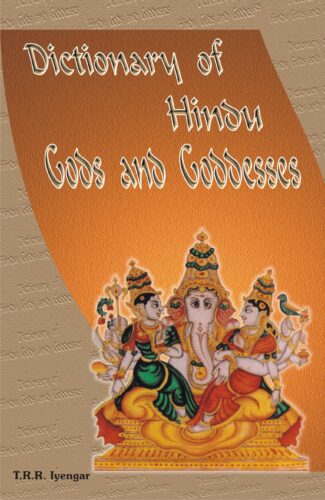
The book systematically studies various Hindu gods and goddesses based on Hindu sacred literature. It covers their earliest references and the evolution of their worship, their attributes and forms, and their signific-ance in the Hindu scheme of worship. It also includes references to many animate/inanimate sacred beings/things associated with the deities.
The Hindu pantheon of gods and goddesses has evolved over many millennia from a simple worship of elements and phenomena of nature to a complex system of myriad gods and goddesses of differing physical attributes, characteristic features and functions and each with different forms. The present Dictionary is an attempt to provide an in-depth yet comprehensive account of Hindu gods and goddesses referring to all the important religious sources. Based on Hindu sacred literature including the Vedas, epics and the Puranas, the book is a systematic study, in alphabetical order, of various Hindu gods and goddesses covering aspects such as the evolution of their worship and their earliest references in texts, stories of their birth and achievements, their attributes, their significance in the Hindu scheme of worship, their forms of representations, and their relationship with one another. It has references to not only personified beings but also other animate and inanimate sacred beings/things, seen in close association with the deities and worshipped by devotees, like Nandi, the bull, the snakes, the banyan and pipal trees, the saligramas and the banalingas. The adornments, vahanas, weapons and places associated with the deities are also elaborately discussed. The Dictionary will be an immensely useful reference work for scholars of ancient Indian mythology and religion as well as general readers willing to know more about Hindu gods and goddesses.

The book systematically studies various Hindu gods and goddesses based on Hindu sacred literature. It covers their earliest references and the evolution of their worship, their attributes and forms, and their signific-ance in the Hindu scheme of worship. It also includes references to many animate/inanimate sacred beings/things associated with the deities.
The Hindu pantheon of gods and goddesses has evolved over many millennia from a simple worship of elements and phenomena of nature to a complex system of myriad gods and goddesses of differing physical attributes, characteristic features and functions and each with different forms. The present Dictionary is an attempt to provide an in-depth yet comprehensive account of Hindu gods and goddesses referring to all the important religious sources. Based on Hindu sacred literature including the Vedas, epics and the Puranas, the book is a systematic study, in alphabetical order, of various Hindu gods and goddesses covering aspects such as the evolution of their worship and their earliest references in texts, stories of their birth and achievements, their attributes, their significance in the Hindu scheme of worship, their forms of representations, and their relationship with one another. It has references to not only personified beings but also other animate and inanimate sacred beings/things, seen in close association with the deities and worshipped by devotees, like Nandi, the bull, the snakes, the banyan and pipal trees, the saligramas and the banalingas. The adornments, vahanas, weapons and places associated with the deities are also elaborately discussed. The Dictionary will be an immensely useful reference work for scholars of ancient Indian mythology and religion as well as general readers willing to know more about Hindu gods and goddesses.
| There are no products |